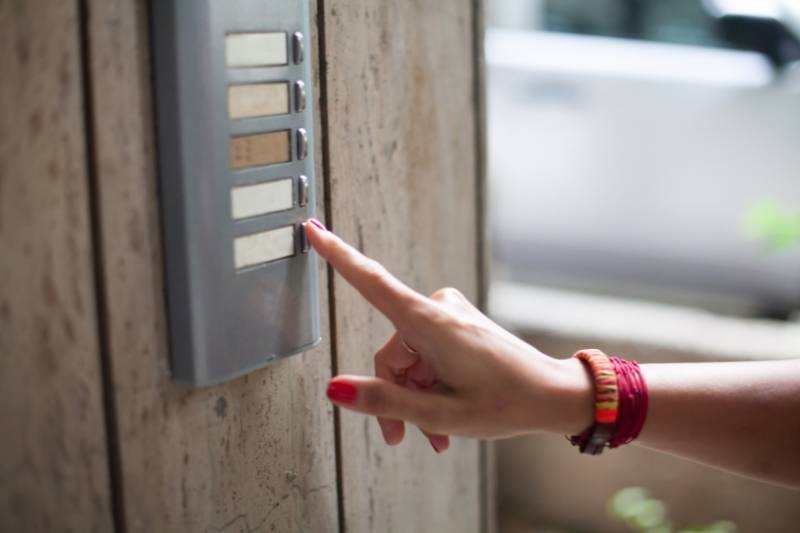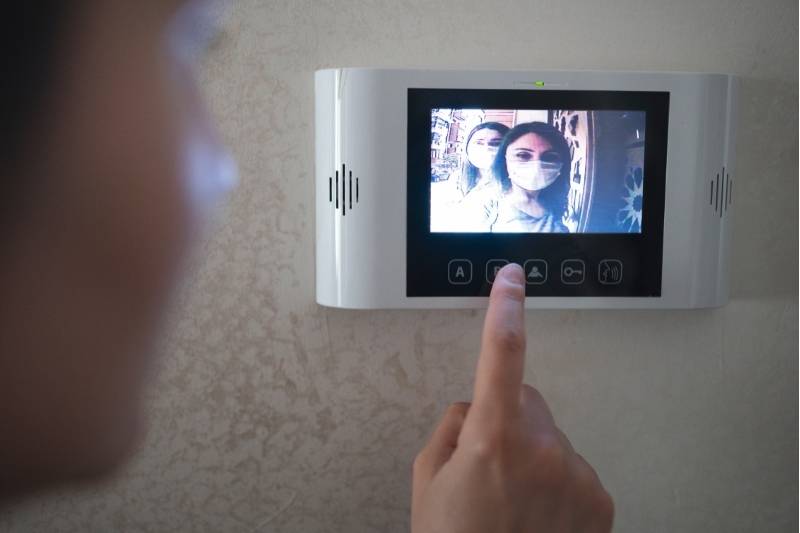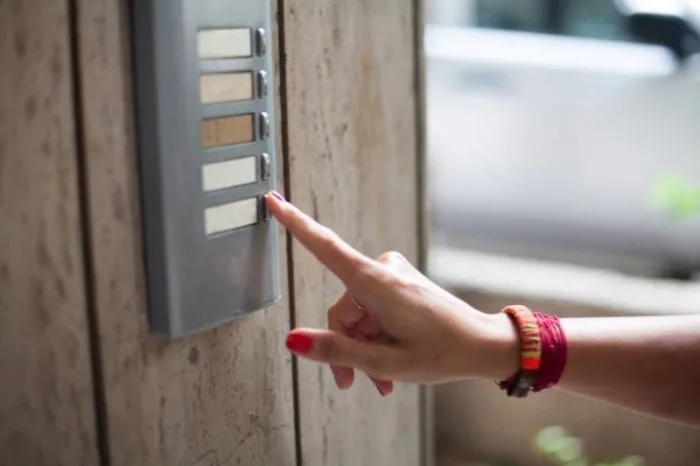Key takeaways:
- Multi-unit doorbells simplify visitor management and enhance resident convenience in multifamily buildings.
- Modern systems offer video calling, smartphone access, and property management integrations for improved operations.
- Video and audio functionality allow residents to verify visitors, reducing unauthorized access.
- Selecting the right system depends on building size, budget, and feature needs, with options like ButterflyMX offering robust and user-friendly solutions.

Multi-unit doorbells are a type of door phone entry system for multifamily properties. In fact, a multi-unit doorbell can completely revamp your property’s security and access control. However, if you’re considering multi-unit doorbells for your building, there’s a lot you should know before implementing them.
Read on to learn about multi-unit doorbells, including what they are, how they work, and three common types of multi-tenant doorbells. Finally, we dive into considerations you should take when selecting the right one — including a more robust alternative.
This guide covers:
- What is a multi-unit doorbell?
- How does a multi-unit doorbell work?
- 3 types of multi-tenant doorbells
- Considerations for multi-unit doorbells
- What is the best multi-unit doorbell?
What is a multi-unit doorbell?
A multi-unit doorbell is a device installed at the entrance of a multi-tenant property that visitors use to alert residents of their arrival.
Depending on the type of doorbell, this alert comes in various forms. Traditional doorbells use a loud chime that emits from a speaker for the entire unit to hear. Other doorbells may utilize WiFi to send notifications to the resident’s phone. And if the multi-unit doorbell has video capabilities, the resident can also see who’s ringing the doorbell. Video doorbells for multiple units offer face-to-face video calling from smartphones or in-unit hardware.
Furthermore, some multi-unit apartment doorbells allow residents to grant visitors access by remotely opening the property’s front gate or door. Depending on the type of system, this action may be done via in-unit hardware or phone.
Learn what smart amenities residents want:
How does a multi-unit doorbell work?
A multi-unit doorbell allows visitors to ring a doorbell and alert residents of their arrival. These devices are designed specifically for properties with multiple units (and, therefore, multiple tenants).
Multi-unit doorbells have three components:
- Outdoor doorbell: The outdoor doorbell is located near the property’s entrance. It contains a directory of the tenants, each with its own button for visitors to alert residents of their arrival.
- In-unit hardware: The in-unit hardware comes in many forms, but the most common is a wired telephone. Residents can speak with the visitor before letting them inside. Other in-unit hardware includes a touchscreen station or the resident’s smartphone if using a smart doorbell.
- Door or gate release: Some (but not all) multi-tenant doorbells have a way for residents to unlock the door or gate remotely. The resident presses a button for the door or gate to open so the visitor may enter.
3 types of multi-tenant doorbells
Before investing in a multi-unit doorbell, you must know the available options.
The three types of multi-unit doorbell systems are:
- Wired: Easily the most expensive type of multi-unit doorbell, wired doorbells physically connect the outdoor base station to in-unit hardware. When a visitor uses the directory, the in-unit hardware will notify the resident. Then, they can then speak to their visitor before letting them in.
- Wireless: A wireless doorbell uses a wireless connection — such as WiFi, Bluetooth, or cellular signals — to connect the outdoor base station to the in-unit hardware. Wireless doorbells for apartment buildings, also known as IP door phone, may also integrate video capabilities and the use of smartphones.
- Smart: Smart multi-unit doorbells seamlessly integrate video and smartphone functionality. Residents can see who’s requesting access at the entrance before letting them in. Instead of in-unit hardware, the resident uses their smartphone to grant access to the visitor.

Considerations for multi-unit doorbells
When choosing a multi-unit doorbell, you must know what to look for. By considering each quality, you’ll provide a better experience for your residents.
Before selecting a multi-unit doorbell, consider:
- Installation requirements: The process of installing a multi-unit doorbell will vary based on the type you choose. Are you willing to spend the lofty price of installing wired doorbells? If not, smart or wireless doorbells are the better option. They’re easier to install and don’t require extensive wiring throughout your property.
- Privacy concerns: Residents may have privacy concerns if your multi-unit doorbell features in-unit hardware with a camera. You must speak to them regarding the feature before making a decision. Otherwise, you may experience a higher turnover rate.
- Demographics: Are your residents mainly millennials and Gen Z? If so, smart multi-unit doorbells are a great option for attracting and retaining younger residents. Older residents may fear new technology due to privacy concerns or lack of previous knowledge.
- Weather: Many multi-unit doorbell systems are designed to stand up against the weather. However, severe weather can take a toll on your hardware. So, you must find the right system that can withstand your area’s climate. That way, your system stands up to the elements.
What’s an intercom doorbell?
A video intercom doorbell is a comprehensive access control system for multifamily properties.
The video intercom has the same components as a multi-unit doorbell but replaces in-unit hardware with residents’ smartphones. Unlike multi-unit doorbells, video intercom systems offer a comprehensive approach to access control. It not only acts as a form of communication and alert system when a visitor arrives, but it also controls access to the property’s door or gate.

What’s the best intercom doorbell?
ButterflyMX offers a vast range of features from which your property will benefit.
Benefits of the ButterflyMX video intercom system include:
- Remote door control: Unlike other multi-unit doorbells, the ButterflyMX video intercom can unlock the door or gate to your property upon receiving a signal from a resident. All it takes is a quick tap in the mobile app.
- Cloud-based: Rather than keeping a server onsite to store data, ButterflyMX stores everything in the cloud. This means it’s easily accessible anywhere from the ButterflyMX OS. Additionally, installation is cheaper, and the system takes up little space.
- Video capabilities: ButterflyMX lets residents see who they’re speaking to when visitors request access. As a result, residents feel safer knowing who they let inside.
- Smartphone-based: Rather than in-unit hardware, ButterflyMX uses residents’ smartphones to receive access requests, speak to visitors, and grant access. No in-unit hardware wiring or installation is required.
- Guest management: ButterflyMX lets residents grant access to guests, including dog walkers, delivery drivers, and more. They can even send single-use or recurring Visitor Passes to those who need property access.






